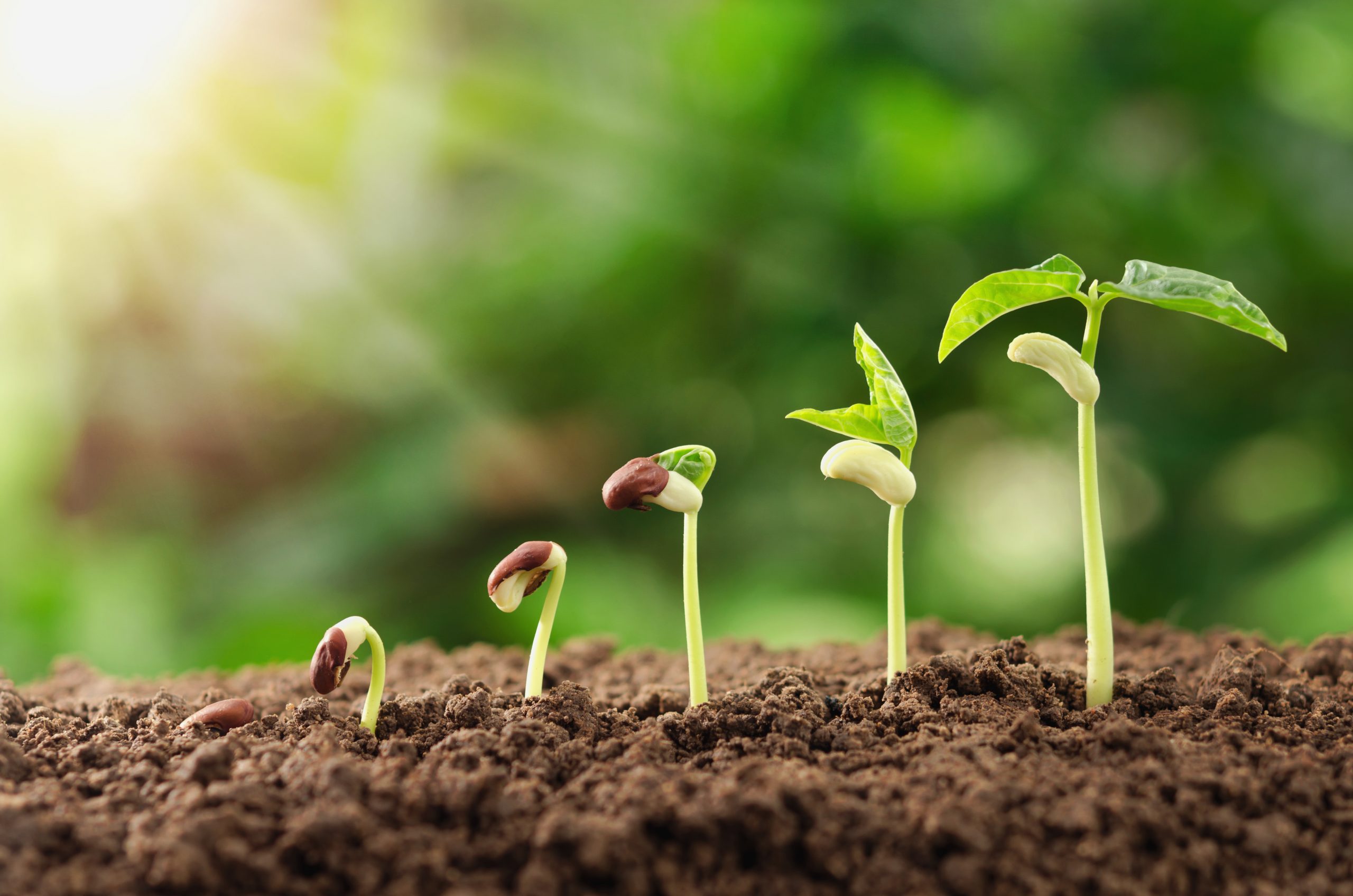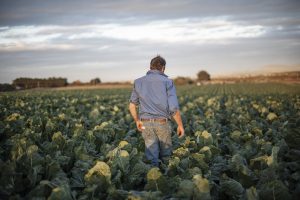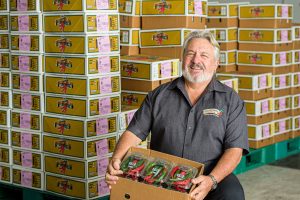Hort Innovation: Supporting the Australian horticulture sector
Hort Innovation is the grower-owned, not-for-profit research and development corporation for Australia’s horticulture sector. It works closely with industry to invest the vegetable R&D levy – together with Australian Government contributions – into key initiatives for growers, through the Vegetable Fund. has compiled the highlights from the Vegetable Fund Annual Report 2020/21.
Throughout another challenging year for the horticulture sector, Vegetable Fund activity remained strong.
Readers are encouraged to download a copy of the overarching Hort Innovation Annual Report 2020/21 to better understand how Hort Innovation worked for the benefit of the horticulture sector during the year. This can be found at horticulture.com.au/annual-report-portal.
2020/21 snapshot of Vegetable Fund investment:
- $14.3 million invested in research and development.
- 58 active research investments.
- $10.2 million in levies collected by the government and passed on to Hort Innovation for investment.
- 35 per cent of Australia’s vegetable production volume goes to processing and 17 per cent is sent to the foodservice sector (down this year due to COVID-19).
- In the five years to 2019/20, vegetable crops with the highest annual growth rate in value were asparagus (16.5 per cent increase), garlic (15.5 per cent increase) and pumpkin (13.1 per cent increase).
- Vegetable crops with the highest share of production volume exported in 2019/20 were asparagus (37.1 per cent), carrots (35.1 per cent) and celery (8.3 per cent).
*Source: Australian Horticulture Statistics Handbook 2019/20.
Highlights for 2021/22
- A host of resources on how to use cover cropping to manage intensive vegetable growing soils. Access these materials at hortinn.com/cover-cropping.
- Preparation support for pest incursions such as fall armyworm and serpentine leafminer, including emergency minor use permits and longer-term investments to bolster the horticulture sector’s response.
- The industry communications program plus nationwide VegNET program to support growers in accessing information and adopting best practice on-farm.
- Vegetable Harvest to Home dashboards providing regular household purchase data and insight reporting. These can be found at harvesttohome.net.au.
- Continued export development work to prepare the industry to take advantage of export opportunities.
- The Good Mood Food across-horticulture campaign to support industries through the effects of another challenging year. Details can be found at horticulture.com.au/the-good-mood-food.
- Investments in the Hort Frontiers strategic partnership initiative to address longer-term and often complex issues and opportunities critical to the future of Australian horticulture. Visit horticulture.com.au/hort-frontiers for details.
- Projects supported by grants secured by Hort Innovation, ranging from cross‑sector Rural R&D for Profit initiatives to horticulture-specific work to aid in access to crop protection products.
You can visit horticulture.com.au/vegetable at any time to access information on new, ongoing and completed projects, and to download resources produced by levy investments such as fact sheets and guides.
Making sure that levy investment decisions align with industry priorities
The Vegetable Fund’s focus over the next five years
The vegetable Strategic Investment Plan (SIP) was created in 2021 to reflect current priorities for the vegetable industry. This involved extensive consultation with vegetable growers and industry stakeholders, including AUSVEG. The SIP is the roadmap that helps guide Hort Innovation’s oversight and management of individual levy industry investment programs.
The vegetable SIP lays the foundation for decision making in levy investments and represents the balanced interest of the particular industry from which the levy is collected. The most important function of the SIP is to make sure that levy investment decisions align with industry priorities.
The vegetable SIP identifies four outcome areas that will contribute to the productivity and profitability of the vegetable sector. They are:
- Industry supply, productivity and sustainability.
- Demand creation.
- Extension and capability.
- Business insights.
Project investments for next year
The vegetable Annual Investment Plan (AIP) 2021/22 will detail how levy funds will be spent over the 12-month period. Investment decisions will be guided by the industry SIP and prioritised based on potential industry impact, as well as availability of levy funds.
The AIP is developed by Hort Innovation, and is informed by the SIP and industry consultation, including collaboration with AUSVEG. The AIP is then discussed with the industry SIAP for feedback and prioritisation. All investments will need to link to the industry’s SIP by addressing a minimum of one KPI against a strategy under one of the four outcomes.
Annual Investment Plans will be published each year over the lifespan of the SIP and industry stakeholders will be advised via established communication channels.
Hort Innovation will continue to report on fund performance regularly, with more focus on reporting on outcomes and the impact of investments.
When available, you can view both documents and get a full picture of how your levy will be invested over the next five years. These will be made available at horticulture.com.au/vegetable-fund-management.
R&D case study
Darren Long: Cover crops: a “game-changer” for growers
Vegetable and potato grower and Managing Director of Tasmania’s MG Farms, Darren Long (pictured above), believes the advancements made in cover cropping as part of this project have been the single most important change to farming that he’s seen in 30 years.
“It’s an absolute game-changer,” he says.
“Growers need a full suite of approaches, and although there will always be a need for traditional methods, this new research gives growers the ability to improve on-farm productivity and sustainability.
“The ultimate aim is to be farming smarter and using cover crops to improve the overall health of our soils and the soil structure. There is a strong focus on how cover crops are grown and incorporated into the soil using a variety of low impact machinery with minimal passes.
“The biggest learning curve that growers are getting out of the project’s research is what’s available and what’s beneficial to the soil, how it works and the different types of root systems – the exposure to all of these new cover crops takes out the guess-work.
“We can access material where the research tells us the companion plants that work well, which means we don’t have to guess what will or won’t work.”
The collaborative nature of the project is also something Darren finds particularly useful and says that by sharing information with other growers, the industry benefits as a whole.
Project details
Optimising cover cropping for the Australian vegetable industry (VG16068)
Key research provider: Applied Horticultural Research
Defeating the pests, bugs and diseases putting the squeeze on veggie productivity and profitability
Beginning in 2018, this investment is responsible for developing an ‘area wide management’ (AWM) strategy to address high-priority viral and bacterial diseases affecting vegetable crops.
There are two teams working on this project, one in New South Wales and one in Queensland, with the aim of investigating the most damaging bacterial and viral diseases of brassicas and cucurbits and delivering this information to industry levy payers to better manage diseases.
Thanks to this project, an area wide management strategy has been developed, identifying and tackling the most pressing viral and bacterial pests impacting Australia’s vegetable crops.
Most recently, the project team have produced a number of fact sheets detailing the symptoms, spread and control measures for viruses affecting various vegetable crops
The next phase of the program will build on the extensive research already collected and analysed, ramping up pathology to identify diseases, working closely on the ground with AUSVEG.
Research outcomes from the program are communicated to growers as they become available, via workshops and grower meetings, field days, industry journals, newsletters and fact sheets.
Project details
Area wide management of vegetable diseases: viruses and bacteria (VG16086)
Key research provider: The Queensland Department of Agriculture and Fisheries
Growing Australian vegetable exports in an ever-shrinking world
With the pandemic placing extra stress on Australian vegetable exports, growers need more help than ever to build export capability and capacity, and to improve their export readiness. This investment gives vegetable growers the tools and techniques they need to grow during COVID.
Founder of Austchilli and renowned Bundaberg farmer, David De Paoli (pictured above), says we’ve got to act locally, but think globally.
“Whether it’s COVID or a natural event going through a specific area, even though we are growing produce in Australia we are all intrinsically connected – whether we like it or not. We can’t take one size fits all approach,” he says.
David believes Hort Innovation’s vegetable industry export program has allowed his business to meet these and other challenges, helping him to operate in a global market, giving him the tools to better understand his customers’ needs, and providing valuable research and export assistance.
“This program does a great job at marketing the Australian brand overseas and leveraging it to the benefit of our growers. While there’s a lot you can learn as you go, it’s good to have people there who can help you so that you make fewer mistakes along the way,” David says.
Despite the many challenges posed by COVID-19, with the help of this program, Australian vegetable exports remained resilient.
Project details
Vegetable industry export program (VG16061)
Key research provider: AUSVEG




